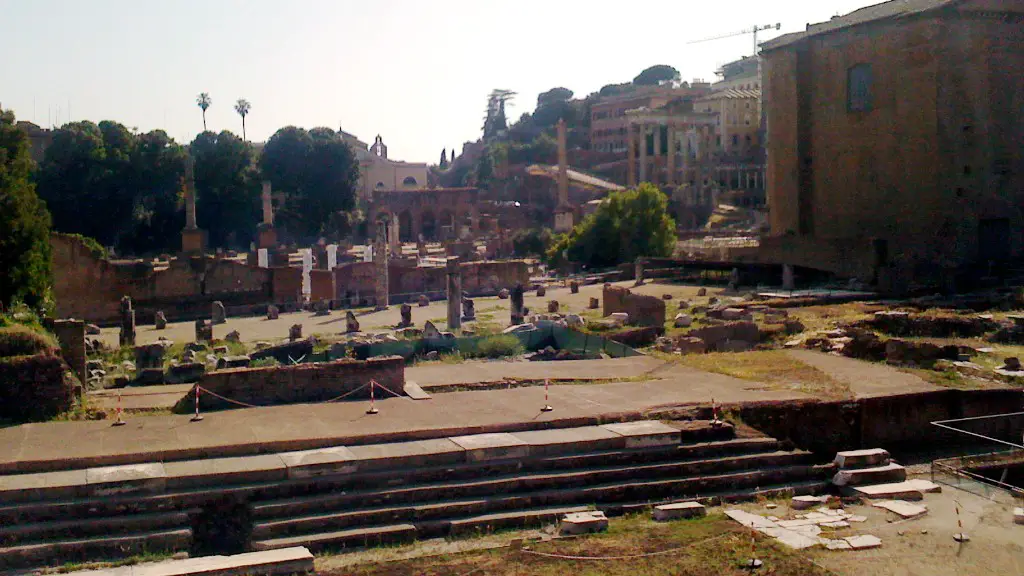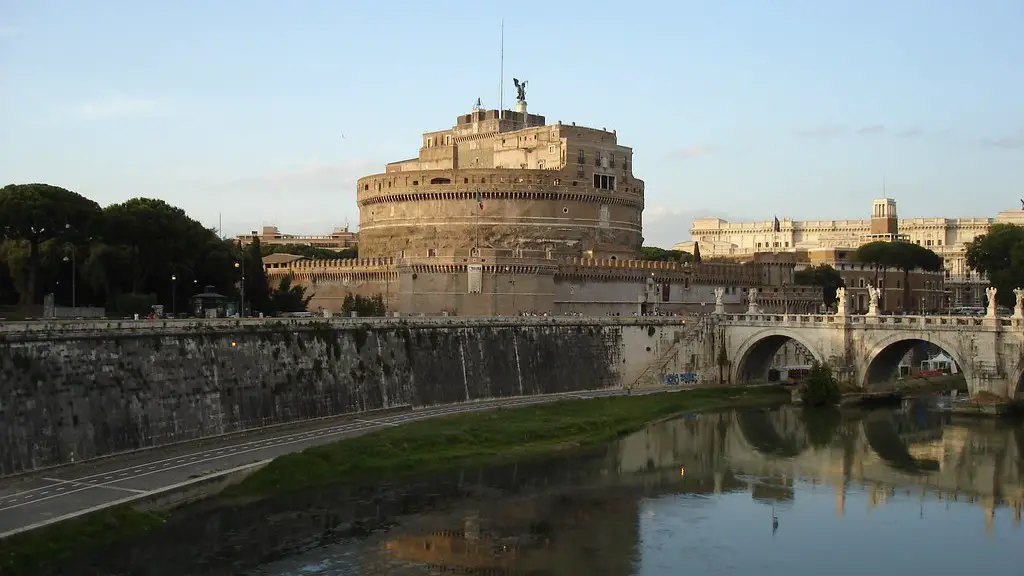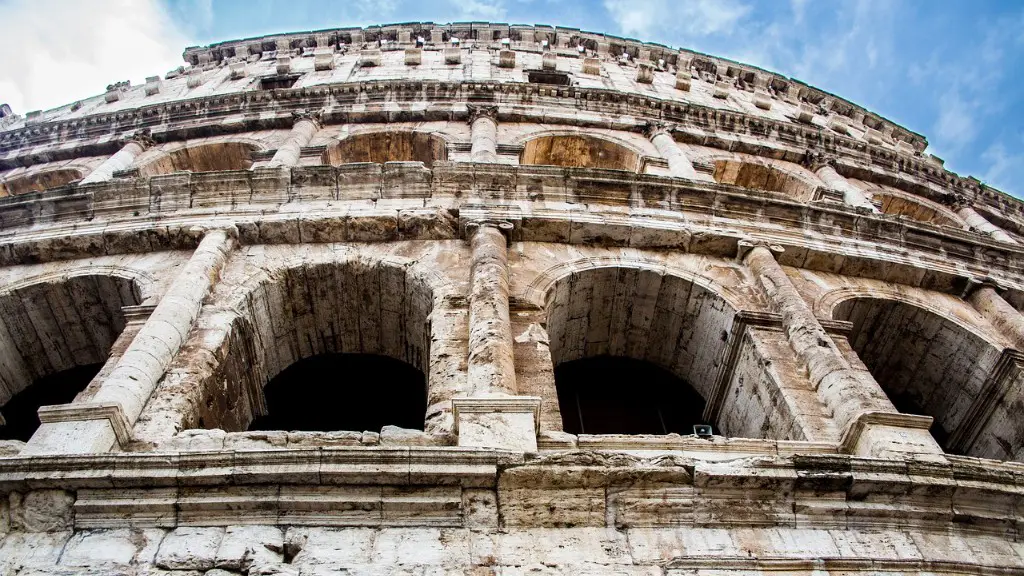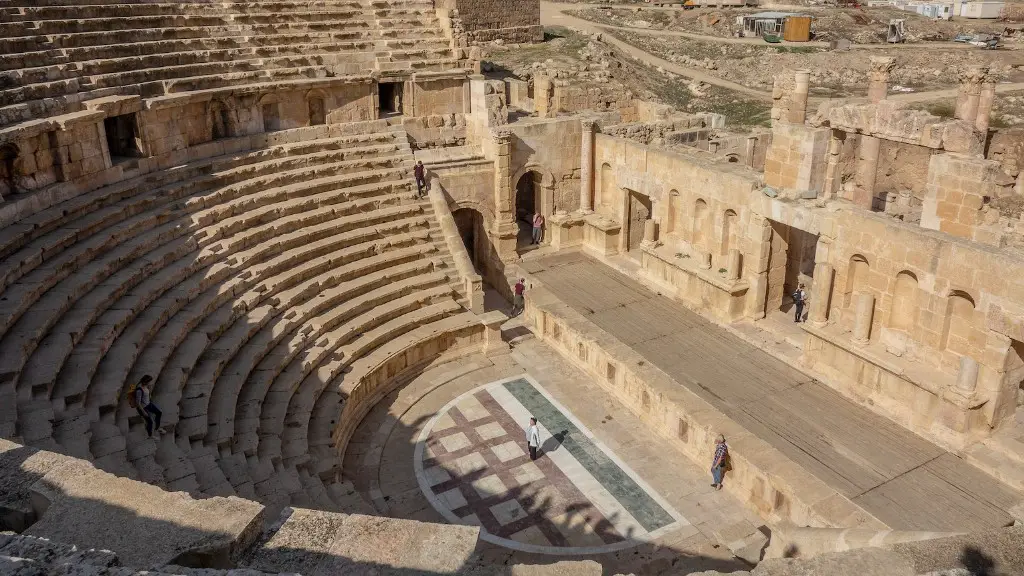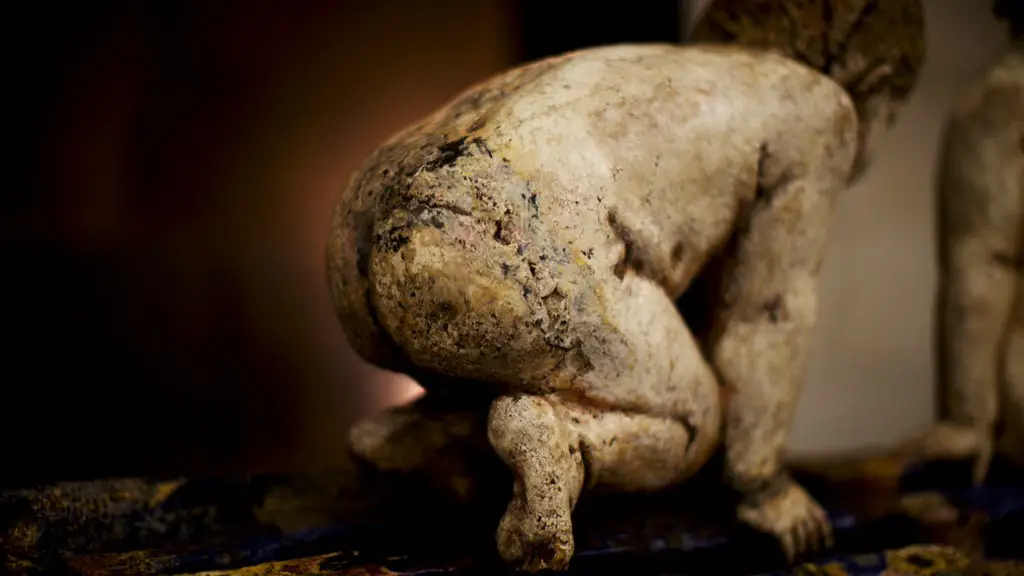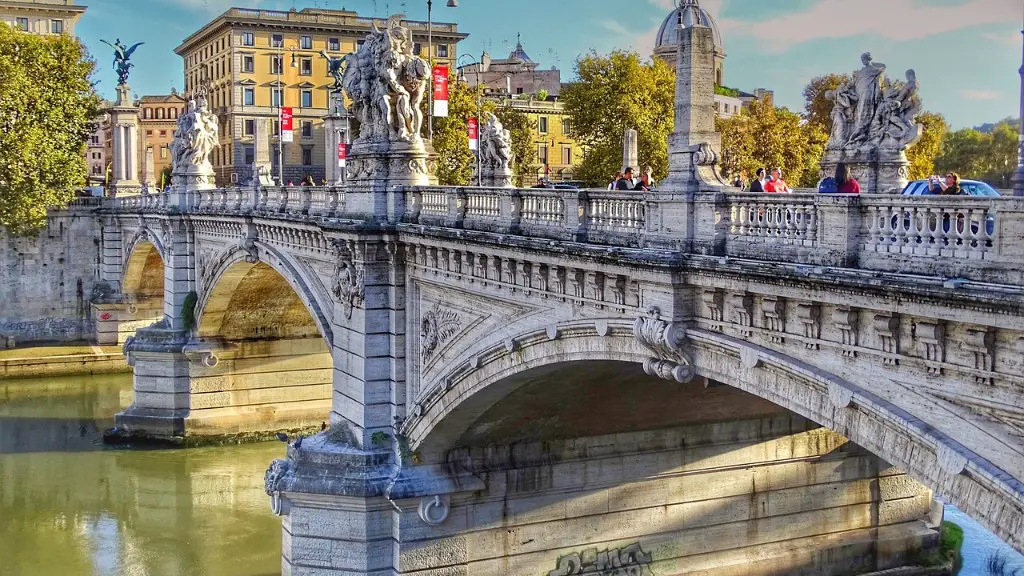Appearance of sculptures in the Roman Empire
The ancient Romans created sculptures that could be found in many places in their large empire. Not only were sculptures used for ornamental purposes, but also for demonstrating the power of Rome and as expressions of Roman values. From people’s homes and temples, to public squares and tombs, the Romans used sculptures to communicate their beliefs and values and to represent their importance in the world.
The most common place to find a sculpture in the Roman Empire was in the temples and public squares of Rome. This is where the people of Rome would go for entertainment and ceremonies. The gods, heroes, and religious figures were usually depicted in these sculptures. An interesting example of a Roman sculpture is the ‘Ara Pacis’, a marble altar that was commissioned by the Roman Senate to celebrate the return of Augustus in 13 BCE. On the sides of the altar are low reliefs of gods, goddesses, and figures from Roman mythology.
Another popular place to find Roman sculptures was in private homes. Homeowners would often take pride in showcasing sculptures of their ancestors or of their gods. These sculptures were often chosen to represent notions of success and honor, and were used to display family wealth. Private homes of the wealthy included grand sculptures of mythological gods and goddesses and heroic figures. These statues were usually made of marble or bronze, signifying the family’s wealth and influence.
The city of Rome was intricately decorated with sculptures of gods and goddesses as decorations for public buildings and homes. Augustus was especially known for his dedication to creating grand sculptures to demonstrate the power of Rome. He even commissioned an Temple for Peace, known as the Ara Pacis, to honor the Roman people. This grand sculpture was made of white marble and contained low reliefs of gods, goddesses, and figures from Roman mythology.
Tombs of important people were also decorated with sculptures dedicated to their memory. These sculptures were often made of marble or bronze, and depicted the deceased in a heroic or religious pose. The sculptures were meant to communicate the power and importance of the person and to ensure that their memory would be honored for years to come.
In short, the Romans used sculptures to express their values, beliefs, and political power to the world. From public squares and temples, to homes and tombs, sculptures were everywhere in the Roman Empire.
Geographic Distribution of Roman sculptures
Roman sculptures were not just found in the city of Rome. They could be seen all over the Roman Empire, from the Western coast to the Eastern territories. Many sculptures were found in cities and towns as people often wanted to show off their power and wealth. There were also plenty of sculptures in rural areas, such as villas, villa domains and rural estates.
The Romans also spread their sculptures to their provinces. This allowed them to demonstrate their power and influence beyond the boundaries of Rome. In the provinces, sculptures were placed in monuments, temples, and public squares. They were used to represent the power and importance of the province and to portray the values of Rome.
In addition to being placed in public places, sculptures were also used as decorations in homes. As in Rome, these sculptures were often used to demonstrate an individual’s wealth, as well as their taste in art. Wealthy people would display sculptures of gods, goddesses and heroic figures, while those of lower status might display sculptures of animals or everyday people.
The Roman Empire also spread its sculptures across the Mediterranean region. Some of the most famous examples are the Elgin Marbles, which were found in the Temple of Athena in Athens. These marble sculptures, which depict gods, goddesses and figures from Greek mythology, were taken to London and can now be seen in the British museum.
Overall, it can be seen that Roman sculptures were found in many places in the Roman Empire, from public squares and temples to homes and private estates. They were used to demonstrate the power and influence of Rome, as well as the values and beliefs of their people.
Technology Used for Roman Sculptures
Roman sculptures were not only found in many places, but also made with great care and precision. The Romans used a number of techniques and materials to create their sculptures, some of which had been developed by the Greeks before them.
One technique they used was terracotta, which was a type of clay used to create sculptures. This was a relatively inexpensive but durable material, which was used to create small statues. This technique was especially popular in the provinces, as it was an easy and affordable way to create sculptures.
The Romans also used bronze and marble to create their sculptures. Bronze was often used to create large statues and show power, while marble was used to create sculptures of the gods and goddesses. Marble statues were made by cutting and carving, which often took a lot of time and skill. Both materials have stood the test of time and can still be seen in sculptures today.
The Romans also developed a technique known as ‘Hellenistic sculpture’, which combined the classical style of Greek sculpture and relaxed elegance of the Roman style. This style focused on intricate and detailed design, emphasizing the beauty of the sculptures. An example of this style is the ‘Ara Pacis’, a marble altar commissioned by Augustus in 13 BCE which is decorated with low reliefs of gods, goddesses, and figures from Roman mythology.
The Romans also used wax and plaster to create moulds for their sculptures. This enabled them to easily create copies of their sculptures and display them in multiple places. These moulds were very detailed and allowed for intricate designs that could not be achieved by hand.
Overall, it can be seen that the Romans were master artisans who used a variety of techniques and materials to create sculptures. From terracotta and bronze to marble and plaster, the Romans used these materials to create stunning sculptures of gods, goddesses, heroes, and everyday people that still stand the test of time.
Purpose of Roman Sculptures
The Romans created sculptures for a variety of purposes. While some sculptures were used to demonstrate the power and prestige of Rome, others were used to express Roman values and beliefs. Sculptures could also be used to memorialize important people, as well as to represent family wealth and status.
One of the main purposes of Roman sculptures was to demonstrate the power and influence of Rome. Augustus, for example, commissioned grand sculptures to demonstrate the might of Rome and to represent its values. These sculptures were often found in public places such as temples, public squares and tombs. They served to remind of the importance of Rome and its values.
Roman sculptures were also used to express Roman values and beliefs. Many sculptures were of gods, goddesses, heroes and figures from mythology. They served to remind the people of Rome of their values and beliefs and of the importance of honoring their gods and goddesses.
Tombs and wealthy private homes also often contained sculptures dedicated to the memory of important people. These sculptures were a way to demonstrate the wealth and status of the family, as well as to honor their memory.
Overall, it can be seen that Roman sculptures served a variety of purposes. They were used to demonstrate the power and influence of Rome, as well as to represent Roman values and beliefs. Sculptures were also used as decorations in homes and tombs, as well as to honor the memory of important people.
Impact of Roman Sculptures
The impact of Roman sculptures can still be seen today. Their sculptures are not only admired for their beauty and craftsmanship, but also for their influence on art and architecture. In particular, many of the techniques and materials used by the Romans are still used today to create sculptures.
Many of the sculptures created by the Romans were used to demonstrate the power and influence of Rome. These sculptures are still studied today to learn about the values and beliefs of the Romans, as well as to understand more about their culture and society.
The Romans also developed a style of sculpture known as ‘Hellenistic sculpture’. This style is still highly admired today and has been adopted by many artists and architects. An example of this style is the ‘Ara Pacis’, a marble altar commissioned by Augustus in 13 BCE, which still stands in Rome today.
Finally, the techniques and materials used by the Romans are still used today to create sculptures. From bronze and marble to terracotta and plaster, many of these techniques and materials have stood the test of time. Through studying these techniques, modern artists have developed new ways to create sculptures that are just as dramatic and stunning as those created by the Romans.
Overall, it can be seen that the influence of Roman sculptures is still felt today. Their sculptures are admired for both for their beauty and craftsmanship, as well as for their influence on modern art and architecture.
Enduring Legacy of Roman Sculptures
It is no surprise that the sculptures created by the Romans have left a lasting impression on the world. They have been admired for centuries for their beauty and craftsmanship, as well as for their influence on art and architecture.
Modern day art has been heavily influenced by the techniques used by the ancient Romans. The Hellenistic style, for example, has been adopted by many artists and architects. In addition, the materials and techniques used by the Romans are still used today to create sculptures.
The Roman sculptures have also been used to study the values and beliefs of their people. Many sculptures depict gods, goddesses, heroes, and figures from mythology. By studying these sculptures, we can gain a better understanding of the Roman culture and society.
The legacy of the Roman sculptures can also be seen in the continuing popularity of public art. Sculptures are still placed in public places, such as squares and temples, to demonstrate the power and influence of the people and to honor their values.
Finally, the impact of the Roman sculptures can be seen in the timelessness of their work. Many of the sculptures still exist today, after thousands of years, and still stand as monuments to the power and values of the Roman Empire.
Overall, it can be seen that the legacy of Roman sculptures is still felt today. From art and architecture to public art and historical research, the Roman sculptures have left a lasting and indelible mark in the world.
